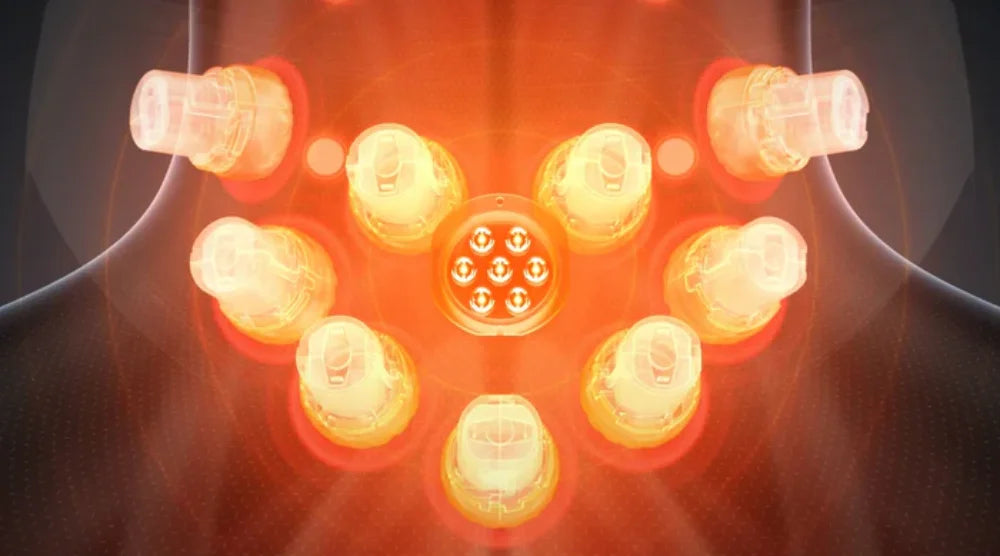Monitoring your heart rate is a simple and effective way to track your health. Whether you’re using your hands or a smart watch, this guide will show you two easy ways to get accurate readings.
Why Measuring Your Heart Rate Is Important

Tracking your heart rate provides valuable insights into your heart’s function and overall health. It can also help identify issues like irregular heartbeats or dizziness, which may indicate potential health concerns. You have two main options for measuring your heart rate—manually or using a smartwatch.
How to Measure Your Pulse Rate by Hand

Checking your pulse by hand is a simple and convenient way to monitor your heart rate, and it can be done anywhere.
-
Find Your Pulse
Place your index and middle fingers on the inside of your wrist, just below the base of your thumb. Alternatively, place the same fingers on the side of your neck, under your jawbone. -
Press Lightly
Gently press until you feel the pulse of blood beneath your fingers. Avoid pressing too hard, as it could interfere with the pulse reading. -
Count the Beats
Use a clock or watch with a second hand. Count the beats for 15 seconds, then multiply by 4 to get your heart rate in beats per minute (bpm). For more accuracy, count for a full minute.
For adults, a normal resting pulse rate typically ranges from 60 to 100 bpm. If your heart rate regularly falls outside this range, it may be a good idea to consult a healthcare provider to rule out any underlying issues.
While hand-measuring your pulse is effective, modern technology, such as smartwatches, offers a more convenient way to monitor your heart rate continuously throughout the day.
Measuring Heart Rate with a Smart Watch

We offer several smartwatches that make heart rate tracking easy and automatic. Take the SKG V7 Pro Smart Watch, for example—it provides 24/7 real-time heart rate monitoring, whether you're resting or working out.
- Open the Heart Rate App
Start by opening the pre-installed heart rate app on the SKG V7 Pro.
- Position the Watch
Ensure the watch is securely strapped on your wrist, snug but comfortable.
- Stay Still
Remain still while the watch measures your heart rate for the most accurate reading.
- View Your Data
Your heart rate will appear on the screen in seconds, and the SKG V7 Pro also saves historical data so you can track trends over time.
While manual heart rate checks are great for quick, on-the-spot readings, using a smartwatch offers the benefit of continuous, all-day monitoring. Devices like the SKG V7 Pro track your heart rate while you're exercising, resting, or even sleeping.
This allows you to spot trends over time, and with features like real-time alerts for abnormal heart rates, the benefit of using a smartwatch is that it helps you stay more proactive about your heart health—something manual checks simply can't offer.
What’s a Normal Heart Rate by Age?
1. Children (6 to 15 years)
For children, a normal resting heart rate typically falls between 70 and 100 bpm. Children's hearts beat faster due to their smaller size and higher metabolic demands. However, physical activity, excitement, or anxiety can cause temporary spikes.
2. Adults (18 years and older)
In adults, the normal resting heart rate generally ranges from 60 to 100 bpm. Factors such as stress, dehydration, caffeine intake, and medication can influence heart rate. A consistent rate above 100 bpm (tachycardia) or below 60 bpm (bradycardia) may indicate potential health concerns.
3. Athletes
Athletes, especially those with high cardiovascular fitness, often have a lower resting heart rate, sometimes as low as 40 to 60 bpm. This is because their hearts pump more efficiently, requiring fewer beats to maintain circulation. While a lower heart rate is common in athletes, it’s still important to monitor for symptoms like dizziness or fatigue.
If your heart rate consistently falls outside these ranges or is accompanied by symptoms such as shortness of breath, dizziness, or chest pain, it’s advisable to consult a healthcare provider to rule out any underlying issues.
What is Considered a Dangerous Heart Rate
If your resting heart rate is consistently above 100 bpm or below 60 bpm (unless you're an athlete), it could signal a potential heart issue. Occasional fluctuations are normal, but if you also experience shortness of breath, fainting, or dizziness, it’s important to see a doctor. These symptoms might indicate conditions like arrhythmias or heart disease.
Common Causes of High Heart Rate
- Anxiety or Stress
- Dehydration
- Fever or Infection
- Caffeine or Other Stimulants
If your heart rate stays abnormal and is accompanied by these symptoms, consult a healthcare professional to ensure your heart is functioning properly.
Exercise Heart Rate and Target Heart Rate

Your target heart rate during exercise is typically between 50% to 85% of your maximum heart rate. This range represents moderate to high-intensity exertion, where your heart is working efficiently to improve cardiovascular endurance. To determine your maximum heart rate, use the formula:
220 – your age = maximum heart rate
For example, if you’re 30 years old, your maximum heart rate is 190 bpm, so your target heart rate should fall between 95 and 162 bpm during exercise. Sustaining this intensity not only strengthens your heart but also enhances cardiorespiratory endurance. Tracking your heart rate with a smart watch allows you to stay within this optimal range, ensuring safe and effective workouts.
The Link Between Heart Rate and Respiratory Rate
As your heart rate increases, so does your respiratory rate, as both work together to meet your body’s oxygen needs. The faster your heart beats, the more oxygen it requires to fuel the muscles during physical activity. For instance, during exercise, your body uses oxygen rapidly to provide energy for movement, and your heart and lungs must work harder to deliver it.
To measure your respiratory rate, count how many breaths you take in 30 seconds, then multiply that number by 2. For adults, a normal resting respiratory rate is typically between 12 and 20 breaths per minute. Monitoring both your heart rate and respiratory rate provides a clearer picture of your overall fitness and helps identify potential health concerns.
FAQ
How Does Heart Rate Affect Blood Pressure?
Heart rate and blood pressure are related but don't always move in the same direction. Typically, as the heart rate rises, peripheral blood pressure may also increase. However, studies have shown that central blood pressure—the pressure in the major arteries near the heart—can sometimes decrease as the heart rate goes up. Both factors play a role in your cardiovascular health but aren't directly tied together all the time.
Does Sleep Lower Heart Rate?
Yes, it’s normal for your heart rate to drop during sleep. In fact, most adults experience a lower heart rate of around 40 to 50 bpm during sleep. This decrease happens because your body is in a relaxed state, requiring less effort to circulate blood. However, individual variations may occur based on fitness levels, health conditions, and sleep quality.
How Can I Increase My Heart Rate During Exercise?
To effectively raise your heart rate and boost cardiovascular fitness, try incorporating these techniques into your workouts:
- Increase intensity: Add incline or use stairs to raise your heart rate.
- Change your pace: Alternate between sprints and slower intervals.
- Reduce rest time: Shorten rest between sets to keep your heart rate up.
Conclusion
Monitoring your heart rate regularly helps you understand your health. We recommend using a SKG smartwatch to monitor your heart rate and blood pressure. We offer smartwatches in both men's and women's styles. Spotting changes early can guide you to make better decisions to stay healthy.




